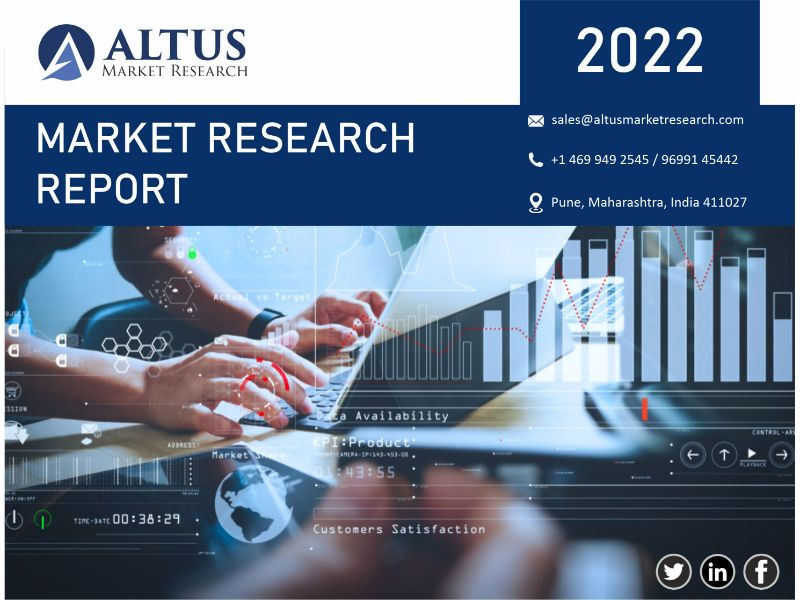A Gartner survey found that, aside from the remaining 4% who will be expected to work entirely remotely, 90% of employees will be expected to work remotely with some degree of flexibility, 6% will be expected to stay in the office full-time.
The findings show that the epidemic will continue to have an impact on the nature of work. Each year, executives produce a list of HR trends that businesses should adopt to succeed. But in this piece, we’ll do more than just keep you up to date on the most recent trends; we’ll also point out any holes and suggest ways to fill them so that managers may excel.
In 2022, HR leaders will put a lot of effort into improving operational excellence, but if we compare it to 2021, enforcing business reforms will come in second. HR leaders “adapted” to trends last year amid high levels of uncertainty because they found sudden changes unsettling.
But now that things are back to normal and people are getting used to the idea of working routinely with COVID-19, HR leaders are concentrating on “transforming” organisational policies and models in order to find a more long-lasting and adaptable solution.
HR executives must:
1. Strengthen important competencies and skills:
Effective communication, quick adaptation, dynamic problem-solving skills, and technical precision were some of the most important vital talents and competencies employees needed to flourish in 2021, according to Forbes research.
In order to support the continuously changing abilities required by the organisation, 40% of HR leaders find it challenging to quickly establish skill development solutions. [Gartner]
Problem with people analytics: It is challenging for human resource management teams to predict the competencies that their employees will require in the future in order to achieve organisational success. This frequently results in bad investment decisions.
When businesses attempt to research the solutions and products they provide and connect all of their studies to the ecosystem they have created around operations and reporting tools, they may experience their own problems in obtaining correct data.
Human resource managers will need to organise their staff in 2022 around “skills” rather than “roles” to tackle this problem.
Since 2017, the overall number of skills needed for a single position has increased by 10% annually, according to data from Gartner TalentNeuronTM.
A company’s strategy plan will be flexible if ownership skills are shared, dynamic skills data is compiled, and it is wisely applied in hiring and management procedures.
Companies are able to thoroughly assess the skill set of their current employees in situations where recruiting patterns have been unpredictable as a result of the pandemic and people analytics is off the charts. Along with educating them to cover any gaps, leaders should match employee abilities to positions that are in demand.
2. Create a strategic plan for organisational design and change administration:
To align teams with new goals, objectives, and company culture and/or to break old habits that prevent a team from achieving its goals, strategic adjustments must be made in organisations. It might seem simple, but the method is not foolproof. There are some hazards involved, with managing significant changes all at once being the largest of them all.
54% of HR executives report that their staff members are worn out from all the upheaval. [Gartner]
Management of organisational change
Employees’ inability to deal with constant change reduces innovation, collaboration, performance, and long-term retention.
Change weariness attracts unfavourable emotions like burnout, annoyance, or alienation, which lowers employee engagement and productivity. For instance, a significant organisational change, such a merger or acquisition, might be a critical factor in the development of change weariness. This could lead to a problem with employee retention if it is not handled properly.
Solution: To be successful, implement individualised, constructive, small-scale adjustments into your employees’ daily lives through your human resource management teams, such as changing managers or office locations. Through employee engagement surveys, HR directors may measure volume, exertion, and disruption to better identify where to focus their efforts and how to manage change while preserving the business culture.
Establishing a close-knit atmosphere is essential for achieving shared objectives and enhancing employee transformation experiences. As a leader, you should encourage your staff to design and shape their own change experiences and pay close attention to any potential unnoticed effects of change at each level.
Additionally, it is crucial to sustain workforce resilience through cultivating positive settings and connections, achieving work-life balance, and monitoring your employees’ mental health.
Follow these HR trends to lower the likelihood of fatigue:
3. Create a skilled present workforce to produce future leaders:
For a firm to be successful in the long run, it is essential to be able to select and develop future leaders.
“45% of HR leaders stated their succession management systems didn’t produce the right leaders at the right time, while 47% of HR leaders said their organisations struggle to build successful leaders” [Gartner]
empowering employees to advance
Multiple employee engagement surveys have revealed that the lack of diversity in the system contributes to the fact that employees frequently lack confidence in their supervisors and other leaders.
Despite having the most skilled workforce, building a strong pipeline for the future is primarily a problem due to low career path transparency, relatively limited access to senior leaders, and a lack of mentorship. On the other hand, HR leaders might not comprehend the future leadership positions and skill sets needed in the dynamic and ever-changing surroundings of today.
According to HR trends 2022, creating a work climate where managers understand their staff is essential. People should come first for leaders, and they should adopt a growth attitude.
Important recommendations for talent acquisition managers to build a strong future bench staff include:
4. Transitioning from temporary to long-term employment:
Organizations made gradual modifications to their strategies and procedures throughout the early stages of the adoption of remote work. Leaders have refined their work models and changed them into hybrid working styles in response to the ongoing impact on organisations. The future of work is shifting from office-centric to human-centric models.
Automation and artificial intelligence have significantly changed the hybrid approach. While many employees gained greater roles during this transformation, many others lost their employment. But practically everyone changed and transformed into something new. In light of this, businesses are reviewing a variety of facets of employment and switching from outdated fashions to more contemporary ones.
According to 49% of HR leaders, they don’t have a clear future of work strategy.
[Gartner]Future of Work Issue: The COVID-19 epidemic has had a long-lasting effect on enterprises. The challenge for HR leaders is determining the scope of the change they must implement in their workplaces with relevant employee feedback. Agony has been felt among talent heads over how to distinguish between temporary and permanent changes in strategic objectives and goals.
The best way to address these problems is for HR leaders to identify how a given trend affects the organisational structure, plans, goals, and business culture and determine whether or not it has a chance of giving the company a competitive advantage.
5. Moving away from DE&I and toward DEI and belongingness:
Leaders in diversity, equity, and inclusion (DE&I) began 2020 with four top priorities that included addressing HR-related issues:
making sure that hiring procedures are diverse
Mentor, cultivate, and advance talent diversity while promoting equity
Senior leaders should be entranced by DE&I tactics.
In order to prevent team sabotage, it’s essential to foster a sense of community.
36% of HR executives feel it’s difficult to make company executives answerable for DEI results. [Gartner]
A basic human need that is hardwired into our DNA is the yearning for social belonging. Nevertheless, 40% of people report feeling lonely at work, which lowers organisational commitment and engagement. Business Review at Harvard
Additionally, workers who felt more a part of their company displayed a 167% boost in their employer promoter score. Business Review at Harvard
Unfairness at the workplace
Employees recognise and comprehend the value of DEI&B in the workplace, but very few people make an effort to alter the setting, forge a better future for work, and implement more DEI&B tactics.
According to Gartner figures, the proportion of women and people of colour in the C suite is incredibly low.
At the middle level, marginalised talent’s growth stagnates. They experience sluggish advancement rates and worse leadership potential foresight.
The globe is now manufacturing a more focused effort to end systematic racism, social injustice, and inequality. Leaders continue to guide through this world. The issue has historically been that workplace inclusion rules continue to be implemented from the top down. An extensive response is what can help with that problem:
HR managers must plan regular training sessions that emphasise both behavioural and critical skill awareness and development.
6. HR technology solving problems
Companies all across the world have experienced rapid technological advancement, and HR technology has opened up new opportunities that have forced businesses to reconsider how they incorporate processes and employee involvement. In the constantly changing workplace of today, it is essential to assess changes in industry trends.
75% of employees would change their lives based on robot recommendations, and 85% of workers want technology to assist shape their future. Technical Republic
“Only 47% of respondents report that their firm is actively implementing some sort of AI in the workplace, and 31% say that their employer is not even discussing AI,” the survey’s authors write.
Technology in HR Issue:
It might be difficult for HR leaders to adapt to technological advancements and apply them in their daily operations. They think the systems are complicated, which makes it challenging to comprehend and analyse data and reports.
High-end technology integration is expensive for businesses and seems like an extra load for the IT support staff.
Due to limitations, HR leaders struggle with HR AI and ethics and are unable to maintain their employees’ engagement and connection with these systems. Microsoft’s face recognition programme has shown signs of failing to distinguish darker-skinned faces, with a 20.8% failure rate for darker-skinned ‘female’ faces. This is one use case of ethical consternation.
Solution:
In the area of employee feedback and mood, technology may genuinely enhance connectivity. There are countless techniques available to solicit anonymous input and have open discussions. Use adaptable technology for your staff. Invite technology using a “pull” mechanism rather than a “push” mechanism, which is invited by your employees based on their requirements, their skill set, and their ultimate goals.
Utilizing tools like pulse surveys to identify patterns or aggregate input is essential for defining new difficulties and responding to employee concerns while dealing with IT issues at work.
Watch out for tech burnout and unite your team around a connected, engaging culture.
Develop tactics that offer a framework for an ecosystem of AI with emotional recognition tools.
To foster a pleasant work environment, HR directors should be trained and educated on how to recognise and promptly eliminate biases.
A tech-friendly culture is crucial for the expansion of any company. Managers can gain valuable information on their future digital investments that will adapt to their workforce by asking staff members about their experiences using and understanding technology.
7. Release your workers: The important factor is employee autonomy
An effective way to lower the rate of employee disengagement at work is to increase employee autonomy in the workplace.
“51% of workers are not engaged at work, and 13% are actively not engaged.” [Gallup]
Employee Flexibility Issue: Managers that micromanage staff and constantly analyse every move make withdrawal symptoms visible in their staff. They tend to merely do what is necessary to get by and avoid unnecessary talks or activities. Employee motivation, productivity, and engagement all decline with poor mental health.
Long-term financial losses to businesses are a result of disengaged workers. The annual total of the aggregated revenue effect across all firms can reach $500 billion. However, there are simple ways to avoid this from happening. Companies can reverse the effect with the proper strategy and culture.
Solution: Apple, for instance, told staff members they should come into the office at least three times per week, which purportedly caused several resignations because staff members wanted autonomy and flexibility to choose their own working arrangements.
In order to address the issue, organisations can:
The phrase “minimum three days in the office per week” could be changed to “we see constitutional value in both the physical workplace and remote locations — we dynamically foster employees to choose their own locations that support their efficiency to carry out certain tasks.” This would be a change from policies to principles. While allowing for the exploration of novel working methods, principles can nevertheless be equally effective in light of employment trends.
Agile and similar implants: Agility and relatedness should be given the proper consideration and investment in order to fully profit from autonomy. Create a culture at your firm that values remote work and encourages people to view their roles as global in nature.
To maintain high levels of cross-functionality and collaboration, create an ecosystem that links people with one another professionally and personally.
Give the appropriate tool for effective operation: Provide your staff with the tools and technologies they need to be self-sufficient, independent, and connected from anywhere. You must make an investment in employee engagement software as a leader if you want to comprehend staff demands.
By employing the management dashboard functions that offer prompt actions, alerts, and prods to mentors to listen to their employees and bridge gaps promptly, empower managers to handle employee needs. Additionally, it offers workers the freedom to choose their own method of operation, and managers can assist them by providing the proper guidelines and training.
What’s next in HR Trends for Employee Engagement?
HR directors must have a distinct perspective on work, the workforce, and the workplace due to the atypical nature of the workplace. Expectations and experiences of employees are more important than ever.





